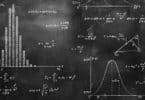General Physics Question Bank:
Who is known as the Father of Nuclear Physics?
(a) Alexander Graham Bell
(b) Alexander Fleming
(c) Ernest Rutherford
(d) Werner Heisenberg
The planet closest to the sun is:
(a) Saturn
(b) Jupiter
(c) Pluto
(d) Mercury
A ball is projected with a velocity of 15 m/s making an angle of 300 with the horizontal. Calculate the time of flight of the ball (Give g= 10m/s2)
(a) 1.5 Second
(b) 3.5 Second
(c) 2 Second
(d) 5 Second
With the increase in temperature, the density of a substance, in general
(a) increases
(b) Decreases
(c) remains same
(d) first decrease then increases
Light year is the.
(a) Distance traveled by light in one year
(b) Mean distance between the Earth and the Sun
(c) Mean distance between the Earth and Moon
(d) Mean distance between the Sun and any planet
When did western scientists first demonstrate that it was possible to produce electricity from light?
(a) 1839
(b) 1883
(c) 1888
(d) 1887
Related: General Biology questions and answers
What is the study of the production of very low temperatures and the behavior of materials at those temperatures?
(a) Iglunacy
(b) Kelvinism
(c) Cryogenics
(d) Calormetrics
The filament of an electric bulb is made of
(a) iron
(b) nichrome
(c) tungsten
(d) graphite
A magnetron is which common house-hold appliance?
(a) Electric blanket
(b) Microwave oven
(c) Television
(d) Blender
What electricity voltage is provided as mains power in Britain?
(a) 100 Volts
(b) 120 Volts
(c) 110 Volts
(d) 230 Volts
The technique used to transmit audio signals in television broadcasts is
(a) Amplitude Modulation
(b) Frequency Modulation
(c) Pulse Code Modulation
(d) Time Division Multiplexing
Related: Magnetism questions
The rainbow is formed by
(a) Total internal reflection
(b) Dispersion of light
(c) Interference of light
(d) None of these
The dimension formulas for impulse is the same as the dimensional formula for
(a) Momentum
(b) Force
(c) Torque
(d) Rate of change of momentum
A nuclear reactor works on the principle of nuclear:
(a) fusion
(b) explosion
(c) fission
(d) assimilation
A body at rest can have
(a) acceleration
(b) Energy
(c) motion
(d) Velocity
Ques. The rain drops are spherical in shape due to
(a) Surface tension
(b) Viscosity
(c) Excess pressure
(d) Stress
Related: General Chemistry quiz questions and answers
A force of 70N gives an object of unknown mass an acceleration of 20m/s2. The mass of unknown object is___.
(a) 7 Kg
(b) 0.3 Kg
(c) 3.5 Kg
(d) 35 Kg
Who is called as Father of Fiber Optics ?
(a) Mario Maurer
(b) Simon Parry
(c) Narinder Singh Kapany
(d) Dr. Thomas Mensah
__ is the region in which no light reaches
(a) Penumbra
(b) Opaque
(c) Umbra
(d) Transparent
To what are the Pauli Exclusion Principle applied?
(a) Electrons only
(b) Fermions, e.g. leptons (including electrons), quarks, baryons and many atoms and nuclei
(c) Photons
(d) Social groupings
Where is El Nino, a warm current that affects the world’s weather?
(a) South Atlantic
(b) North Atlantic
(c) Arctic
(d) Pacific
Related: Synonyms for aptitude test
The twinkling of star is due to:
(a) reflection
(b) dispersion
(c) absorption
(d) refraction
Electrostatic precipitator is used to control:
(a) Water pollution
(b) Solid waste
(c) Noise pollution
(d) Air pollution
Which is used to measure the strength of electric current ?
(a) Ammeter
(b) Altimeter
(c) Audiometer
(d) Electrometer
The radiator tubes are manufactured using:
(a) Cast iron tubes
(b) Aluminum tubes
(c) Brass tubes
(d) Steel tubes
The magnetic flux through a 50- turn coil increases at the rate of 0.05 Wb/s. What is the induced emf between the ends of the coil?
(a) 2.5V
(b) 5V
(c) 3V
(d) 7V
Related: Inventions and discoveries quiz
The velocity of sound does not depend on
(a) Temperature
(b) Medium
(c) Pressure
(d) Humidity
The ultrasonic sound can be heard by
(a) Dogs
(b) Men
(c) Microphone
(d) None of these
Ques. If the length of a simple pendulum is doubled, its time period will
(a) Increase
(b) Decrease
(c) Remain constant
(d) None of these
Light Year is used to measure
(a) intensity of light
(b) mass
(c) time
(d) astronomical distance
X-rays were discovered by –
(a) Roentgen
(b) H.Davy
(c) Lavoisier
(d) Faraday
Related: question and answer about Solar System
Supersonic Jet causes pollution by thinning of
(a) CO2 layer
(b) O2 layer
(c) O3 layer
(d) SO2 layer
Which of the following is a derived unit?
(a) Mass
(b) Length
(c) Time
(d) Velocity
Carbon dioxide is called a greenhouse gas because-
(a) it is used in photosynthesis
(b) it absorbs infrared radiation
(c) it emits visible radiation
(d) its concentration remains always higher than other gases
RADAR is used for
(a) locating submerged submarines
(b) receiving a signal from a radio receiver
(c) locating geostationary satellites
(d) detecting and locating the position of objects such as aeroplanes
Which is not electric resistant?
(a) Ebonite
(b) Charcoal
(c) Glass
(d) Lac
The Viscosity of solid is
(a) Infinite
(b) Zero
(c) Maximum
(d) Minimum
Which of these is most attracted by a magnet?
(a) Wool
(b) Plastic
(c) Water
(d) Metal
Which types of light colours are strongly absorbed by plants?
(a) Red and Yellow
(b) Green and Yellow
(c) Blue and Red
(d) Indigo and Red
Atomic bomb is based on the principle of
(a) Nuclear Fission
(b) Nuclear Fusion
(c) Nuclear Transition
(d) Radio Emission
What is a device that allows electric currents to pass through it in one direction only, used for converting AC to DC?
(a) Voltmeter
(b) Rectifier
(c) Rheostat
(d) Accumulator
What causes a screeching sound when a live microphone is put too close to a speaker?
(a) Grazeright
(b) Chewfore
(c) Eatleft
(d) Feedback
Related: Female Reproductive system quiz
The satellite ”Aryabhata”, launched on 19 April 1975, to conduct experiments in X-ray astronomy, aeronomics, and solar physics, was built by which country?
(a) Indonesia
(b) Arab League
(c) India
(d) Turkey
Which is NOT an acceptable method of distributing small power outlets through out an open plan office area?
(a) Power Poles
(b) Power Skirting
(c) Flush Floor Ducting
(d) Extension Cords
A weightless rubber balloon has 100gm of water in it. Its weight in water will be
(a) 100gm
(b) 200gm
(c) 50gm
(d) Zero
Mesons are found in
(a) Laser beam
(b) X-rays
(c) Gamma rays
(d) Cosmic rays
__ is used to slow down neutrons emitted in a nuclear fission reaction.
(a) Agent
(b) Reactors
(c) Moderators
(d) Controller
Related: Optics questions
In 1960 an international agreement defined the metre in terms of the wavelength of the light from which gas, when burnt?
(a) Oxygen
(b) Argon
(c) Krypton
(d) Neon
Railway tracks are banked on curves so that
(a) No frictional force may be produced between the tracks and wheels
(b) The train may not fall down inward
(c) Necessary centripetal force may be obtained from the horizontal component of normal reaction due to the track
(d) None of the above
Cryogenic engine find application in
(a) Submarines
(b) Super Conductivity
(c) Rocket Technology
(d) Nuclear Energy
A net force of 350 N acts on a body of mass 70 Kg which is initially at rest. Its acceleration is __ m/s2.
(a) 3
(b) 7
(c) 5
(d) 9
When an aero plane is making a loop, pilot does not fall down because his weight provides the necessary
(a) Force against gravity
(b) Centripetal force
(c) Centrifugal force
(d) Viscous force
Related: Microbiology quiz questions
Which of the following is the fundamental quantity ?
(a) Volume
(b) Velocity
(c) Time
(d) Force
Zener- diode is used as :
(a) An amplifier
(b) An rectifier
(c) An oscillator
(d) Voltage regulator
The efficiency of a Cornot engine working between the steam point and ice point is
(a) 28.8 %
(b) 27.8 %
(c) 26.8 %
(d) 23.8 %
The electromagnetic waves used in telecommunication are__.
(a) Ultraviolet
(b) Infra-red
(c) Visible
(d) Microwave
The law which gives a relationship between electric potential difference and electric current is called:
(a) Faraday’s law
(b) Newton’s law
(c) Ohm’s law
(d) Oersted’s law
Related: Permutation and combination problems with solutions and answers
Charge is a
(a) Vecor quantity
(b) Either Scalar or Vector
(c) Scalar quantity
(d) Dimensionless
Which of the following has high penetrating power ?
(a) Beta Particle
(b) Alpha Particle
(c) All of the above
(d) Gamma Rays
The size of an atomic nucleus is diameter of the atom
(a) 1/1000
(b) 1/10000
(c) 1/100
(d) 1/100000
Related: Scientific tools names and pictures
Flux meter is used to measures
(a) Altitudes
(b) Magnetic flux
(c) Angles
(d) Refractive Indices
Of the following natural phenomena, tell which one known in Sanskrit as ’deer’s thirst’?
(a) Rainbow
(b) Earthshine
(c) Halo
(d) Mirage
Who discovered the Law of Gravitation?
(a) Isaac Newton
(b) Galileo
(c) Einstein
(d) Francis bacon
Which of the following is associated with diamonds?
(a) Hardness
(b) Brilliance
(c) Use
(d) Conductivity
The allotrope of carbon which is a good conductor of heat and electricity is.
(a) Diamond
(b) Graphite
(c) Charcoal
(d) None of these
Related: fact about Earth
When a bicycle travels on a rough surface, its speed.
(a) Increase
(b) Decrease
(c) Remains the same
(d) None of these
Pick out the scalar quantity from the followings
(a) Force
(b) Acceleration
(c) Work
(d) Velocity
What is the fundamental unit of time?
(a) Minute
(b) Hour
(c) Second
(d) Day
Which of the following class of forces is different from others
(a) Pulling of a wooden block
(b) Stretching of a coiled spring
(c) Pushing a wall
(d) Electrical force
When water condenses into ice, __
(a) Heat is absorbed
(b) Heat is released
(c) Heat remains unchanged
(d) None of these
Decibel is the unit of
(a) Intensity of sound
(b) Intensity of lights
(c) Velocity of light
(d) Gravitational constant
Related: Chemical Equilibrium questions
Echo is heard when the reflecting surface is
(a) of less volume
(b) of large area
(c) of less area
(d) of large volume
A photocell converts light energy into
(a) chemical energy
(b) electrical energy
(c) potential energy
(d) kinetic energy
A reflex klystron is used to generate
(a) Radio-waves
(b) X-rays
(c) Micro-waves
(d) Gamma rays
Ultraviolet rays are absorbed by
(a) Mica
(b) Quartz
(c) Glass
(d) Rock Salt
Which law of Newton defines the ‘force’?
(a) Newton’s third law of motion
(b) Newton’s first law of motion
(c) Newton’s second law of motion
(d) Newton’s law of gravitation






